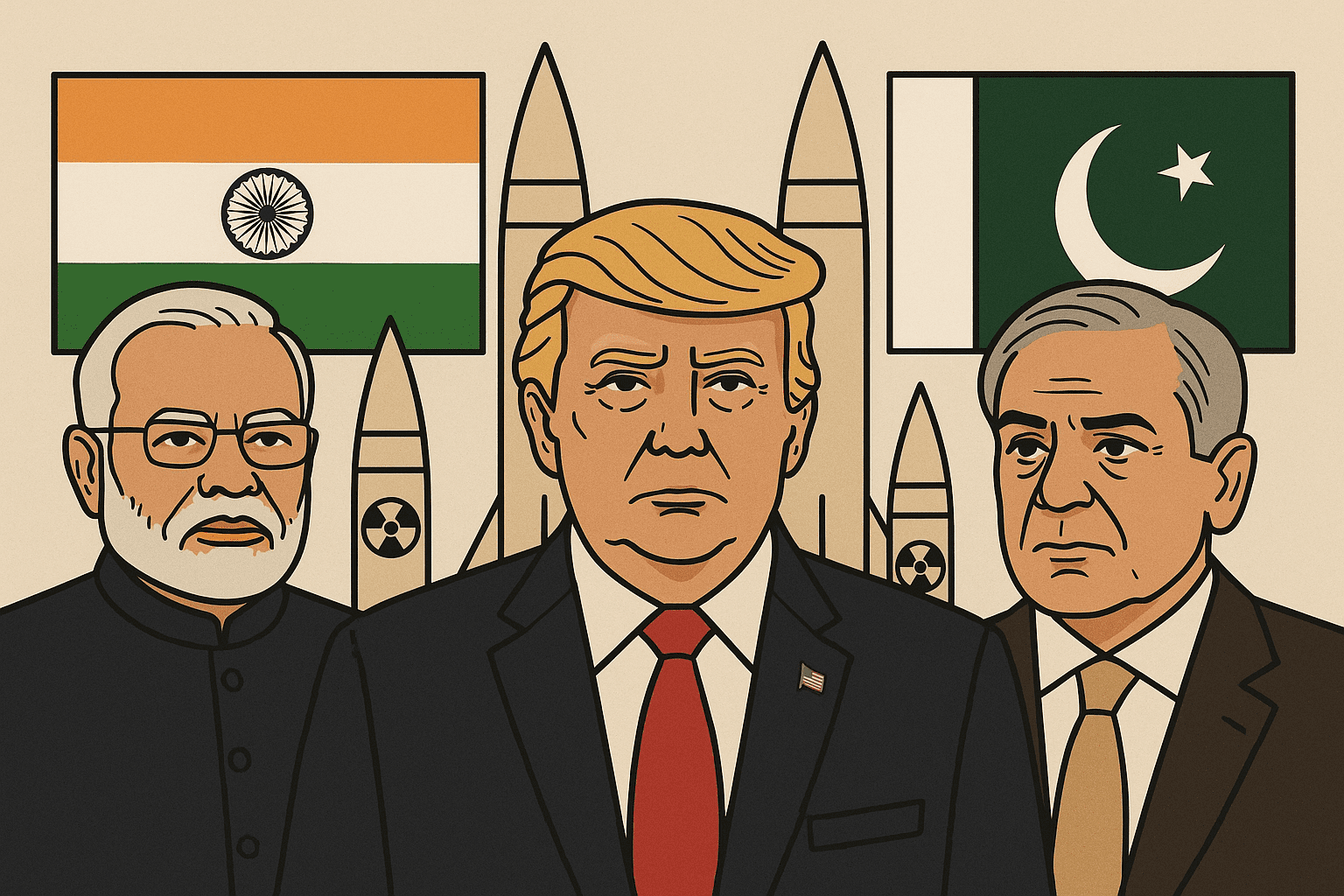The United States, after initial indifference, was compelled to intervene diplomatically in the latest India-Pakistan conflict following chilling intelligence indicating a direct threat to Pakistan’s nuclear command facilities. What began as a localised escalation after a terrorist attack in Kashmir on April 22, swiftly spiralled into a high-stakes military exchange — involving missile strikes and drone attacks — that threatened to destabilise South Asia and provoke nuclear catastrophe.
Initially, both President Donald Trump and Vice President J.D. Vance distanced Washington from the conflict. Vance reiterated the view that this was not America’s war. Trump’s comments underscored a hands-off approach, echoing past rhetoric of regional self-containment.
However, the reality on the ground evolved rapidly.
By May 10, relentless air strikes across the Line of Control had targeted multiple Pakistani military bases. The most consequential was India’s strike on Nur Khan Airbase, situated near Islamabad, which reportedly lies adjacent to Pakistan’s Strategic Plans Division — the nerve centre of its nuclear command.
The potential compromise of Pakistan’s nuclear command structure — even if unintentional — crossed a perceived red line.
U.S. intelligence reportedly suggested that any further damage could have prompted Pakistan to consider a retaliatory nuclear response. Islamabad’s veiled references to its nuclear capability, coupled with a reported (though later denied) convening of its National Command Authority, signaled to Washington that escalation had entered dangerous territory.
Experts have long noted Pakistan’s ambiguity regarding its nuclear doctrine. Unlike India, which adheres to a declared “No First Use” policy (albeit with recent political hedging), Pakistan has deliberately kept its doctrine opaque. Former strategic commander Gen. Khalid Kidwai’s known “red lines” — such as territorial loss, crippling of military assets, or economic blockade — had arguably been approached if not crossed.
Faced with the spectre of nuclear confrontation, senior American officials, including Vance and Marco Rubio, launched a flurry of high-level diplomatic calls. Both Indian Prime Minister Narendra Modi and Pakistani Prime Minister Shehbaz Sharif were reportedly warned that further escalation risked catastrophic consequences. Vance is said to have personally conveyed Washington’s assessment of a “high probability of dramatic escalation.”
Within 24 hours, President Trump announced a ceasefire deal brokered by the US. Messages from both New Delhi and Islamabad confirmed the ceasefire, highlighting their respective national security priorities but implicitly acknowledging external pressure.
This is not the first time the US has intervened at the edge of a nuclear flashpoint between the South Asian rivals. In 1999, then-President Bill Clinton helped defuse the Kargil War after Pakistan issued vague threats of nuclear action. The current episode mirrors that crisis, suggesting that nuclear deterrence in South Asia remains dangerously fragile and reactive rather than structured or transparent.
This conflict once again exposes the volatility of India-Pakistan ties and the fragility of crisis management mechanisms. While India continues to modernise its nuclear and conventional capabilities, questions remain about its adherence to No First Use in the face of evolving threats. Pakistan’s nuclear posture, meanwhile, remains deliberately ambiguous — designed as a counterbalance to India’s superior conventional military power.
The United States’ shift from indifference to urgency reveals the international community’s enduring role in nuclear conflict prevention in South Asia. As China, Russia, and regional actors watched closely, Washington’s intervention underlines the ongoing global anxiety around South Asia’s unresolved disputes and their nuclear shadow.
The 2025 ceasefire may hold — for now.
But until India and Pakistan establish a credible, bilateral de-escalation framework and transparent strategic doctrines, the spectre of nuclear confrontation will continue to hover ominously over the subcontinent. The world, once again, narrowly avoided disaster — not through regional restraint, but through external intervention driven by existential fear.


